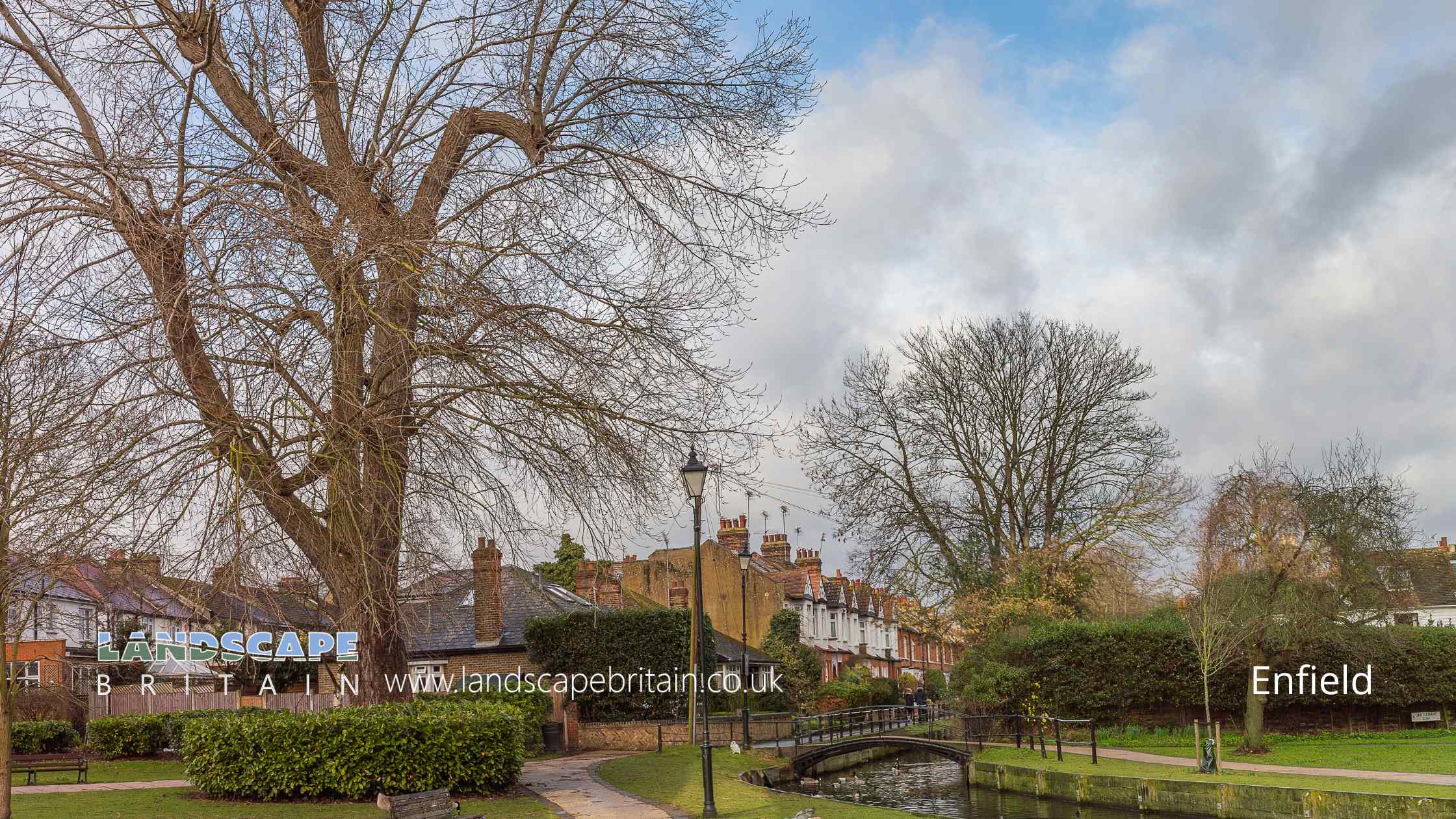
Enfield by Fela Sanu
Enfield
Enfield is a large borough and historic market town in north London, situated approximately 10 miles from central London. It is part of the London Borough of Enfield, which also includes areas such as Edmonton, Palmers Green, and Southgate. The town has a long history and today serves as a residential and commercial hub with a mix of suburban neighbourhoods, green spaces, and urban centres.
The name Enfield is thought to derive from “Eanafeld,” meaning open land belonging to a person named Eana. It was mentioned in the Domesday Book of 1086 and has medieval roots, with a traditional market charter granted in the 14th century. Over time, the town grew from a rural settlement into a commuter suburb, particularly following the arrival of the railway in the 19th century.
Enfield retains a historic centre around Enfield Town, where the market still operates several days a week. Key landmarks include Enfield Palace (now part of a shopping centre), St Andrew’s Church, and the 17th-century Enfield Grammar School. The New River, an artificial waterway built in the 17th century to bring fresh water to London, runs through the area and adds to its historic character.
The borough is known for its parks and green spaces. Trent Park is a large country park on the northern edge, offering woodland walks and open fields, while Forty Hall is a Grade I listed manor house set within formal gardens and parkland, open to the public. The River Lea also forms part of the borough’s eastern boundary, with the Lee Valley Park providing nature reserves and trails.
Enfield has a diverse population and a wide range of housing, from Victorian terraces to post-war estates and newer developments. It is served by several rail and underground lines, including services to Liverpool Street, Moorgate, and the Piccadilly Line, making it well connected for commuting into central London.
Economically and culturally, Enfield is a mixed area. It has local shopping centres, schools, and community facilities, while still retaining a sense of its independent market-town origins. It has also been home to various industries over time, including the Royal Small Arms Factory, which produced the famous Lee-Enfield rifle.
Today, Enfield continues to grow and change while keeping its blend of history, green space, and community focus.
Created: 22 April 2025 Edited: 22 April 2025
Enfield
Shopping in Enfield
Local History around Enfield
There are some historic monuments around including:
Elsyng PalaceEarthworks at Old ParkMedieval moated site, 408m ENE of Highland's SchoolHalf Moat Manor House, moated site and associated leat, Cheshunt.Theobalds Palace, Waltham CrossFlash Road aqueductMoated site, Camlet Moat, Moat WoodWorld War II Bofors Anti-aircraft gun platform 340m south east of Cheshunt railway stationEleanor Cross, Waltham CrossWorld War II Heavy Anti-aircraft gunsite at Burnt Farm Camp.Wildlife in and Around Enfield
Mammals found in Enfield
There have been 28 species of mammals recorded in the enfield area.
| 45 Khz Pipistrelle (Pipistrellus pipistrellus) |
| Badger (Meles meles) |
| Black Rat (Rattus rattus) |
| Brown Long-Eared Bat (Plecotus auritus) |
| Chinese Barking Deer (Muntiacus reevesi) |
| 55 Khz Pipistrelle (Pipistrellus pygmaeus) |
| Bank Vole (Myodes glareolus) |
| Brown Hare (Lepus europaeus) |
| Brown Rat (Rattus norvegicus) |
| Common Shrew (Sorex araneus) |
Tap here for more mammals found in and around Enfield
Birds found in Enfield
There have been 50 species of birds recorded in the enfield area.
| (Anthus spinoletta/petrosus agg.) |
| Baer's Pochard (Aythya baeri) |
| Blue-Winged Teal (Anas discors) |
| Cackling Goose (Branta hutchinsii) |
| Cape Teal (Anas capensis) |
| Australian Shoveler (Anas rhynchotis) |
| Bar-Headed Goose (Anser indicus) |
| Brent Goose (Branta bernicla) |
| Canada Goose (Branta canadensis) |
| Carolina Wood Duck (Aix sponsa) |








